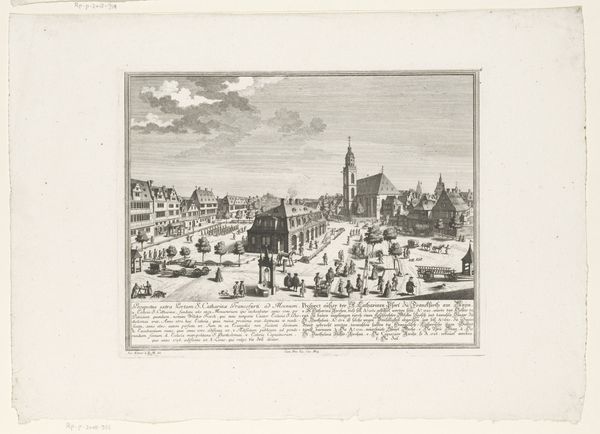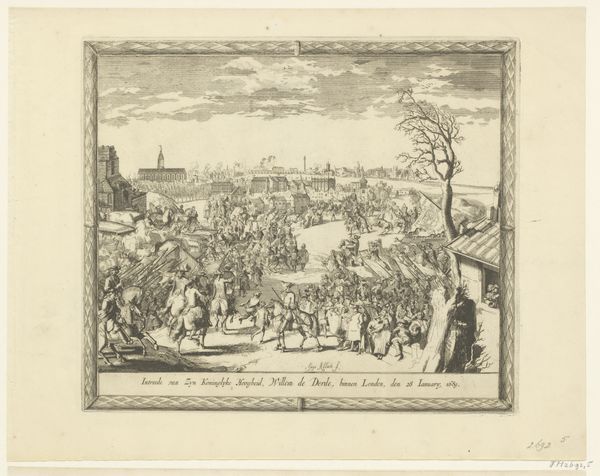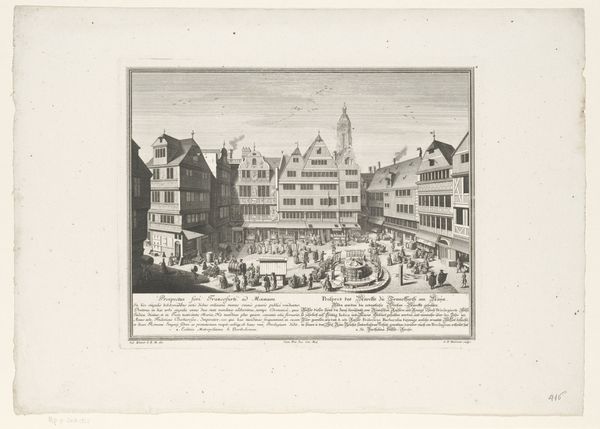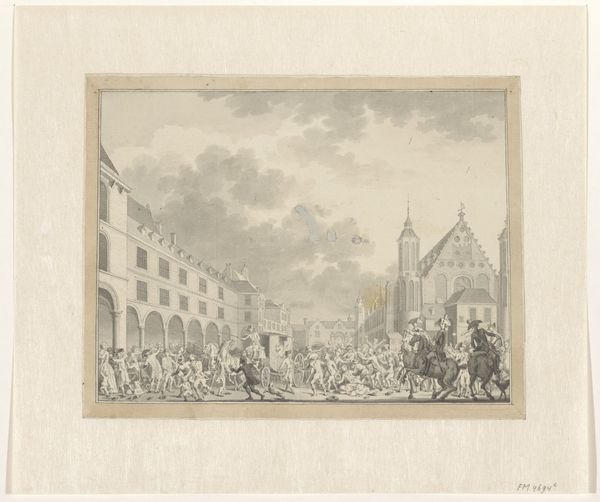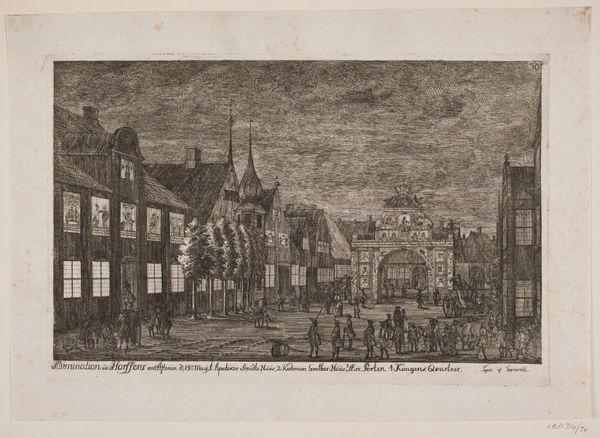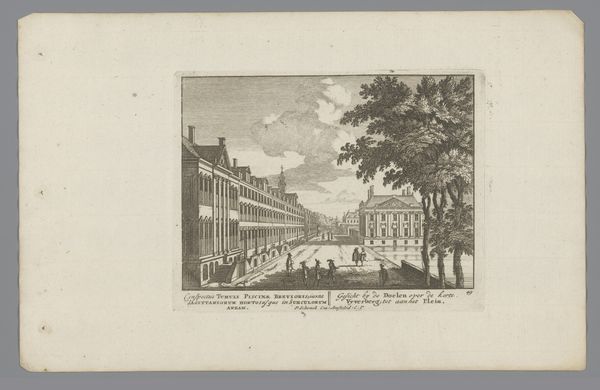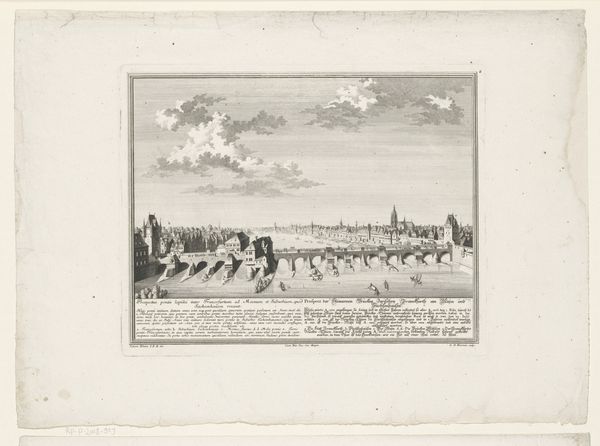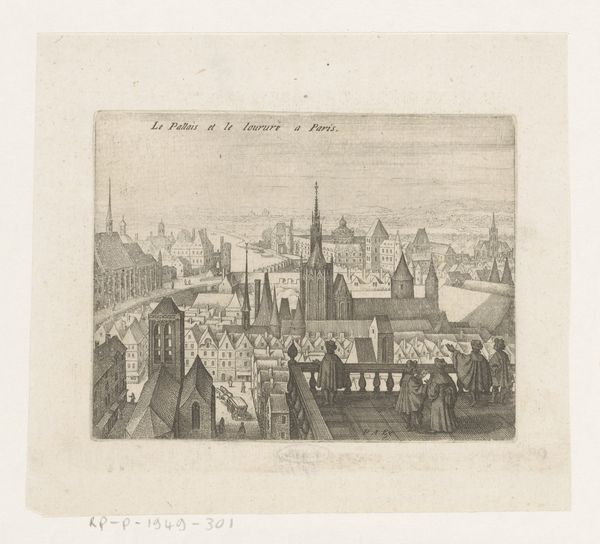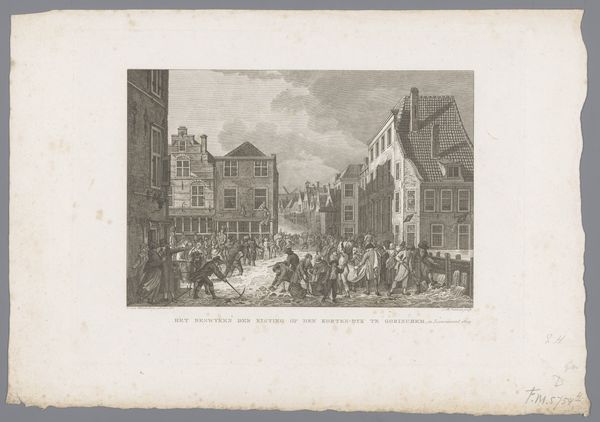
print, engraving
#
baroque
# print
#
old engraving style
#
landscape
#
perspective
#
cityscape
#
engraving
Dimensions: height 270 mm, width 341 mm
Copyright: Rijks Museum: Open Domain
This detailed view of Frankfurt’s Römerberg was made by Georg Daniel Heumann in the 18th century using an engraving technique. The process begins with a metal plate, traditionally copper, into which the design is carefully incised using a tool called a burin. Consider the precision required to create such a detailed image, line by line. Look at the varying depths and thicknesses of the engraved lines, which create light and shadow, volume, and texture. Ink is applied to the plate, filling the grooves, and the surface is wiped clean. The print is then made by pressing paper against the plate, transferring the ink. Prints like this one were crucial for circulating images and information. The Römerberg was the heart of Frankfurt’s civic and commercial life, depicted here bustling with activity. Through the engraving, Heumann isn’t just showing us a place; he’s capturing a moment in the city's social and economic life. The production of prints like these supported a whole economy of makers and vendors. By looking closely, we can learn a lot about labor, commerce, and the circulation of images in 18th-century Europe.
Comments
No comments
Be the first to comment and join the conversation on the ultimate creative platform.


